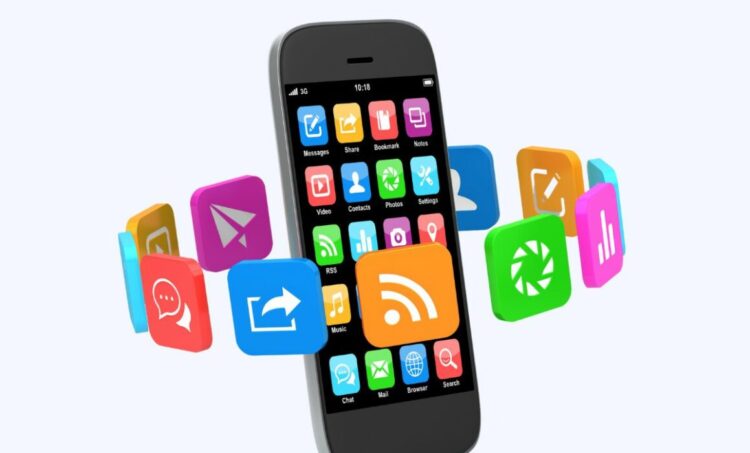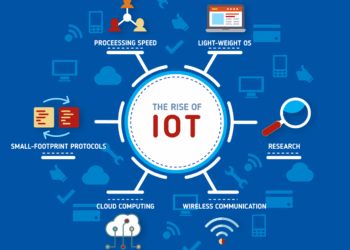In today’s hyper-connected world, mobile applications have become an integral part of digital life. They are not just tools of convenience but powerful engines driving user engagement, loyalty, and brand awareness. From banking to entertainment, mobile apps enhance digital user experiences by offering personalization, speed, and instant accessibility.
As mobile usage continues to grow exponentially, businesses are rapidly shifting their digital strategies to focus on mobile-first solutions. This article explores how mobile applications are revolutionizing digital user engagement, the key features that boost interaction, emerging trends, and how businesses can optimize their apps to maintain user interest in a competitive market.
The Rise of Mobile Application Usage
The shift towards mobile apps has been swift and transformative. According to recent statistics, more than 90% of smartphone users spend their time using apps rather than web browsers. This data proves that applications have become the dominant gateway to digital content.
There are several reasons why mobile apps have outpaced traditional web access:
A. Speed and Performance
Mobile apps load content faster and perform more efficiently than websites. This speed enhances the user experience by reducing wait times and boosting satisfaction.
B. Personalization
Apps can offer tailored experiences based on user preferences, location, and behavior. This increases engagement and strengthens emotional connections to the brand.
C. Offline Functionality
Many apps can be used offline or with limited connectivity, which adds an extra layer of accessibility.
D. Push Notifications
Unlike websites, apps can send direct notifications to users, prompting interaction and real-time engagement.
Key Features That Enhance User Engagement
Designing an app that captivates and retains users requires an understanding of what users expect. The following elements are proven to improve digital engagement through mobile apps:
A. Intuitive User Interface (UI)
A clean, simple, and easy-to-navigate interface ensures that users find what they need without confusion. Consistency in design across screens enhances usability.
B. User Experience (UX) Design
Beyond looks, the overall user experience—from the speed of access to interaction flow—can determine whether a user stays or leaves the app.
C. Gamification
Adding game-like elements such as achievements, leaderboards, and progress tracking encourages users to interact more frequently with the app.
D. AI-Based Personalization
With artificial intelligence, apps can recommend products, services, or content based on past interactions, improving relevance and satisfaction.
E. Social Sharing Features
The ability to share content or achievements directly to social media platforms increases user interaction and provides free marketing for the app.
F. Regular Updates and Improvements
Users expect apps to stay current. Regular updates that fix bugs, add features, or improve performance show commitment to user satisfaction.
How Mobile Apps Improve Customer Retention
An engaged user is a loyal user. Apps that consistently deliver value can transform casual users into long-term customers. Here are several strategies mobile apps use to keep users coming back:
A. Loyalty Programs
Many eCommerce and service apps offer points, discounts, or rewards for continued use, encouraging repeat engagement.
B. Personalized Notifications
Targeted alerts about new offers, content, or updates can draw users back to the app without being intrusive if done right.
C. In-App Customer Support
Offering real-time chat or help options within the app fosters trust and improves the user experience.
D. Analytics-Driven Insights
By tracking user behavior, developers can identify drop-off points and improve the app to prevent churn.
E. Onboarding Guides
First-time users benefit from tutorials or guided tours that help them understand how to use the app effectively.
Mobile Apps and Brand Visibility
Mobile applications also serve as excellent branding tools. Once downloaded, an app becomes a persistent presence on the user’s device, continually reminding them of the brand.
A. Customized Branding
Apps with consistent logos, themes, and design elements reinforce brand identity every time they’re opened.
B. Push Notifications as Marketing
Regular but non-spammy notifications can keep your brand at the top of users’ minds and drive traffic back to your offerings.
C. Unique Selling Propositions (USPs)
Apps allow companies to showcase unique features or services not easily accessed through a web browser, making the brand more competitive.
Emerging Trends in Mobile Application Development
Technology evolves rapidly, and so do user expectations. Staying ahead of trends is essential for maintaining relevance and engagement.
A. Augmented Reality (AR)
AR is transforming user engagement by offering immersive experiences. For example, beauty apps allow users to “try on” makeup virtually, and furniture apps let users see how items look in their homes.
B. 5G Technology
With 5G, mobile apps can deliver content faster and support more complex features like HD video streaming and real-time multiplayer games.
C. Super Apps
A single app offering multiple services (like messaging, shopping, banking) increases engagement by providing everything in one place.
D. Voice Integration
Voice search and commands improve accessibility and user-friendliness, particularly in driving or hands-free scenarios.
E. Privacy-Focused Design
With rising awareness of data protection, apps that emphasize security and transparency are gaining user trust and loyalty.
Best Practices for Optimizing Mobile App Engagement
Having a great app is only the beginning. Here’s how developers and marketers can ensure their mobile apps continue to attract and retain users:
A. Monitor and Respond to Feedback
User reviews on app stores are a goldmine of information. Responding to complaints and making updates based on user input shows responsiveness.
B. A/B Testing Features
Experimenting with different layouts, colors, or call-to-actions can help determine what engages users most effectively.
C. Use Analytics to Drive Decisions
Track which features are most used and which cause users to exit. Use this data to improve user journeys and eliminate bottlenecks.
D. Ensure Cross-Platform Compatibility
An app should perform seamlessly across Android and iOS, as well as on various screen sizes.
E. Optimize Loading Speed
Even a one-second delay can lead to significant user drop-off. Lightweight design and optimized code improve performance.
F. Invest in ASO (App Store Optimization)
Just like SEO for websites, ASO helps your app appear in top search results in app stores, increasing downloads.
Mobile Apps vs. Mobile Websites
While both serve mobile users, apps and websites have distinct advantages and limitations. Understanding these can help businesses choose the right path—or combine both.
A. Performance
Apps offer smoother, faster experiences compared to websites, which rely on browser performance and internet speed.
B. Offline Access
Unlike mobile websites, many apps offer features that work without a constant internet connection.
C. User Retention
With push notifications and personalized experiences, apps are more effective at keeping users engaged over time.
D. Development Cost
Mobile websites are generally cheaper and quicker to develop. Apps require more investment but offer richer engagement.
E. Updates
Websites can be updated instantly for all users, while app updates need to be downloaded and sometimes approved by app stores.
Industry-Specific Use Cases
Different industries use mobile apps to enhance user engagement in unique ways. Let’s explore how various sectors benefit:
A. Retail and eCommerce
Apps offer exclusive discounts, personalized recommendations, and faster checkout experiences, which boost sales and retention.
B. Healthcare
Apps allow users to book appointments, access medical records, and receive telehealth consultations, improving patient engagement.
C. Education
eLearning apps offer interactive lessons, quizzes, and progress tracking that keep students engaged and motivated.
D. Finance
Banking apps provide instant account access, budgeting tools, and real-time notifications for improved financial management.
E. Hospitality and Travel
From booking to itinerary management, apps streamline the travel experience and offer upselling opportunities through targeted content.
Conclusion
Mobile applications are not just a passing trend—they are the backbone of the modern digital experience. Their ability to offer personalized, fast, and immersive interaction makes them indispensable tools for businesses seeking to enhance user engagement.
As technology advances, mobile apps will continue evolving with smarter AI, faster connectivity, and richer features. Businesses that invest in mobile-first strategies and user-centric app design will stand out in crowded markets, improve retention, and ultimately drive long-term success.














